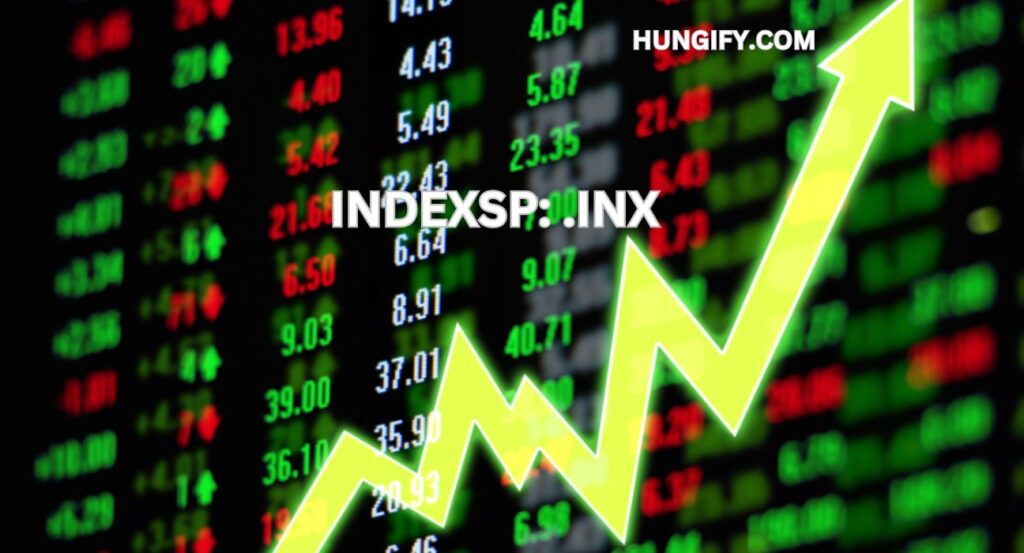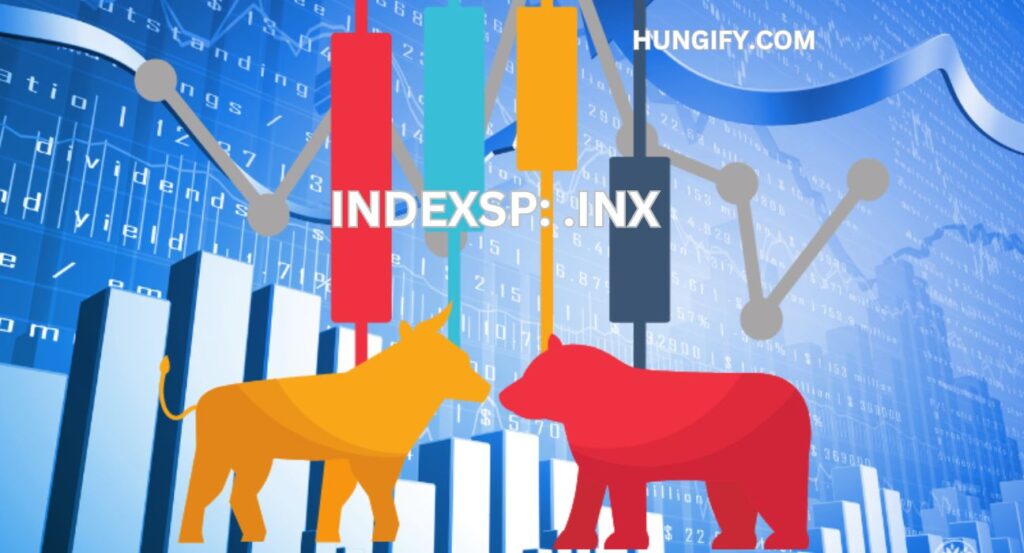indexsp: .inx, often referred to as the S&P 500, is one of the most prominent stock market indices globally, representing the performance of 500 leading companies listed on stock exchanges in the United States. This index serves as a benchmark for the overall health of the U.S. equity market and influences investment decisions worldwide. In this article, we will explore the history, composition, and performance of indexsp: .inx, as well as its impact on global markets.
Read More: ChartContacts .shop: A Comprehensive Contact Management Platform
Introduction to indexsp: .inx
indexsp: .inx is the ticker symbol for the S&P 500 Index, which tracks the market performance of 500 large-cap U.S. companies. It reflects the health and trends of the U.S. stock market, making it an essential indicator for investors, analysts, and financial professionals. The index covers diverse sectors, providing a holistic view of the U.S. economy. Understanding indexsp: .inx can help investors gauge market sentiment and make informed decisions.
History and Background of indexsp: .inx
How the S&P 500 Index Was Created
The S&P 500 was introduced in 1957 by Standard & Poor’s, now a division of S&P Global. It was designed to provide a comprehensive view of the U.S. stock market by including 500 of the most widely traded stocks. Over the years, the S&P 500 has evolved to become one of the most widely followed indices worldwide, influencing not only U.S. markets but also global investment trends.
Milestones and Key Historical Events
Throughout its history, the S&P 500 Index has been through significant milestones. During the 1987 market crash, the dot-com bubble of the late 1990s, and the 2008 financial crisis, the index reflected the economic turbulence of each era. Despite these setbacks, indexsp: .inx has shown resilience and continues to recover, reaching new highs in the following years.

Components of the S&P 500 Index
Breakdown of the Top Companies in the S&P 500
The S&P 500 Index consists of 500 companies across various sectors, such as technology, healthcare, finance, and consumer goods. Some of the top companies include Apple, Microsoft, Amazon, Alphabet (Google), and Tesla, which account for a significant portion of the index’s value. These companies are leaders in their respective industries and play a crucial role in driving the overall performance of the index.
Criteria for Inclusion in the S&P 500 Index
For a company to be included in the S&P 500, it must meet specific criteria, such as having a market capitalization of at least $14.6 billion, positive earnings over the past four quarters, and a public float of at least 50%. The S&P 500 Committee regularly reviews and updates the list to ensure it accurately represents the U.S. economy.
indexsp: .inx Performance Analysis
Recent Trends and Market Performance
The performance of indexsp: .inx is influenced by various factors, such as economic data, corporate earnings, and global events. Over the past year, the index has experienced fluctuations due to geopolitical tensions and changes in interest rates. Despite these challenges, the index continues to attract investors looking for exposure to U.S. equities.
Factors Affecting the S&P 500 Index Performance
Several factors affect the performance of indexsp: .inx, including changes in GDP growth, employment data, and Federal Reserve policies. External factors like oil prices, international trade agreements, and political stability also play a role in shaping the index’s trajectory. Investors need to consider these factors when analyzing market movements.
Long-term Performance and Historical Data
Over the long term, the S&P 500 Index has delivered consistent returns, averaging around 8-10% annually. Historical data shows that the index has weathered economic downturns and continued to grow, making it a reliable benchmark for assessing the health of the U.S. economy.
How to Track indexsp: .inx
Real-time Tracking and Analysis Tools
Investors can track the performance of indexsp: .inx through various platforms such as Bloomberg, Yahoo Finance, and Investing.com. These platforms provide real-time data, charts, and technical analysis tools that help investors monitor the index’s movements and make informed decisions.
Popular Platforms for Monitoring the S&P 500 Index
Platforms like Investing.com, MarketWatch, and CNBC offer comprehensive information on indexsp: .inx, including historical data, market news, and expert analysis. These resources allow investors to stay updated on the latest developments and track the index’s performance over time.
Read More: Colour :fjtr27afvfy= pink: Discover the Latest Trends
Impact of indexsp: .inx on the Global Economy
Influence on U.S. and Global Markets
The S&P 500 Index serves as a barometer for the U.S. economy and has a significant impact on global markets. Changes in indexsp: .inx can influence investor sentiment worldwide, causing ripple effects in other major indices like the Dow Jones, NASDAQ, and FTSE. A strong performance in the S&P 500 often leads to increased confidence in global markets, while a decline can trigger concerns about economic stability.
Role of the S&P 500 Index in Investment Decisions
indexsp: .inx plays a pivotal role in investment decisions, as many mutual funds, ETFs, and pension funds use it as a benchmark. Investors and financial advisors often compare their portfolios’ performance against the S&P 500 to evaluate returns. Additionally, the index’s movements influence asset allocation strategies and risk management.
Benefits of Investing in indexsp: .inx
Investing in indexsp: .inx, or the S&P 500 Index, offers several advantages for both novice and experienced investors. It provides broad exposure to 500 leading U.S. companies, reducing the risk associated with investing in individual stocks. Additionally, the S&P 500 has historically delivered consistent returns over the long term, making it a reliable option for passive income and portfolio growth.
How indexsp: .inx Reflects Economic Health
The performance of indexsp: .inx is often seen as a reflection of the overall health of the U.S. economy. When the index rises, it usually indicates that the economy is growing and that corporate profits are strong. Conversely, a declining S&P 500 can signal economic downturns, prompting investors to reevaluate their strategies. This connection makes it a vital tool for understanding market sentiment and economic trends.
indexsp: .inx vs. Other Major Indices
indexsp: .inx is frequently compared to other major indices like the Dow Jones Industrial Average (DJIA) and the NASDAQ. While the S&P 500 includes a broader range of sectors, the DJIA focuses on 30 large industrial companies, and the NASDAQ emphasizes technology firms. These differences mean that indexsp: .inx often provides a more comprehensive view of the U.S. market, making it a preferred benchmark for many investors.
Index Funds Tracking indexsp: .inx
Many index funds and Exchange-Traded Funds (ETFs) are designed to replicate the performance of indexsp: .inx. Popular options include the SPDR S&P 500 ETF (SPY) and the Vanguard 500 Index Fund (VFIAX). These funds allow investors to gain exposure to the entire index with a single investment, making it easier to diversify and reduce risk compared to investing in individual stocks.
Impact of Market Conditions on indexsp: .inx
indexsp: .inx is highly sensitive to market conditions, including changes in interest rates, inflation, and geopolitical events. When market conditions are favorable, the index tends to rise, reflecting investor confidence. However, during periods of uncertainty or negative economic data, indexsp: .inx may experience volatility. Monitoring these conditions is crucial for investors looking to capitalize on market movements while minimizing risks.

Conclusion
indexsp: .inx, or the S&P 500 Index, is a critical tool for understanding the U.S. stock market and making informed investment decisions. By tracking its performance and analyzing its components, investors can gain valuable insights into market trends and potential investment opportunities. The resilience and growth of indexsp: .inx over the years reflect its importance in the global financial landscape and its ongoing influence on the investment community.
Read More: Shape :yl6axe4-ozq= Pentagon :Understanding Its Geometry and Applications
Frequently Asked Questions
What is indexsp: .inx?
indexsp: .inx is the ticker symbol for the S&P 500 Index, which represents the performance of 500 large-cap U.S. companies across various sectors.
How is indexsp: .inx calculated?
indexsp: .inx is calculated based on the market capitalizations of its 500 constituent companies, weighted by their free-float-adjusted market value.
Why is indexsp: .inx important for investors?
indexsp: .inx serves as a benchmark for the U.S. stock market, reflecting overall market health and helping investors make informed decisions.
What factors influence the performance of indexsp: .inx?The performance of indexsp: .inx is influenced by factors such as GDP growth, corporate earnings, Federal Reserve policies, and geopolitical events.
How can I invest in indexsp: .inx?
Investors can gain exposure to indexsp: .inx through index funds and ETFs, such as SPDR S&P 500 ETF (SPY) and Vanguard 500 Index Fund (VFIAX).
What is the historical average return of indexsp: .inx?
The historical average annual return of indexsp: .inx is around 8-10%, making it a popular choice for long-term investment strategies.
What are the top companies in indexsp: .inx?
The top companies in indexsp: .inx include Apple, Microsoft, Amazon, Alphabet (Google), and Tesla, which significantly influence the index’s performance.
How does indexsp: .inx compare to the Dow Jones and NASDAQ?
indexsp: .inx provides broader market coverage compared to the Dow Jones, which focuses on 30 industrial companies, and the NASDAQ, which emphasizes technology firms.
What are the risks of investing in indexsp: .inx?
Investing in indexsp: .inx carries market risks, including volatility due to economic downturns, interest rate changes, and geopolitical instability.
How does indexsp: .inx impact global markets?
The performance of indexsp: .inx significantly affects global markets, as it serves as a leading indicator of U.S. economic health and investor confidence worldwide.
